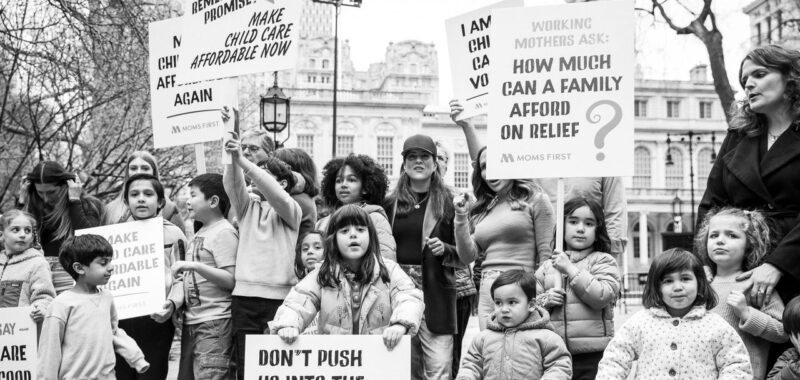It’s also important to examine the Trump birth rate proposals in context. As the New York Times reports, the birth rate push within the administration seems to be a result of a contingent of “pro-natalists,” who want to not only encourage women to have more kids, but to push the idea of a “traditional” family structure that does not include, notably, single mothers or LGBTQ+ families. In fact, Project 2025, the far-right blueprint for Trump’s second term which is aimed at restoring Christian values, is focused not just on increasing the birth rate, but on rescuing the heterosexual, nuclear family from what it sees as its decline.
“Our ultimate goal is not just more babies but more families formed,” Emma Waters of the Heritage Foundation, which wrote Project 2025, told the New York Times.
So, arguably, those who are pushing these Trump birth rate policies aren’t interested in helping ease the burden on parents in the US through solving their pain points. They seem to be more interested in returning women to a time when their sole purpose was mothering, in order to restore their vision of what a family should be. Another policy reportedly being considered would be to award a “National Medal of Motherhood” to moms with more than six children—a number that for most women would make working outside the home prohibitively expensive.
But even if the intention behind this birth rate push is troubling, it’s worth examining if the proposed policies would actually ease the burden on American moms. South Korea, which has a birth rate far lower than the US, has implemented so-called “baby bonuses” to encourage moms to have babies, with the country reportedly considering up to $99,000 per child. And these policies in the country and others have seen some success, says Dr. Jane Waldfogel, a professor of social work at Columbia University and the author of Child Benefits.
“My review of the evidence indicates that the policies that have been most successful at influencing fertility have been those that provide a large benefit for families with newborns or young children,” she tells Glamour. “The evidence also shows that these policies have other important benefits. Families with young children are at the greatest risk of economic insecurity and poverty and face high costs to cover parents’ time away from work or child care. The research also shows that young children are the most vulnerable to the effects of financial insecurity and poverty. So providing higher benefits for families with newborns or young children—through enhanced child tax credits or baby bonuses—is a win-win.”
However, much of the online discourse surrounding the proposed Trump “baby bonus” has been focused on the amount, $5,000, which most deem woefully inadequate to make any meaningful difference.
“A one-time bonus isn’t the solution to the very real crisis that moms and families are facing right now,” says Rowe-Finkbeiner.
What’s most frustrating to her and other advocates in the space is the idea that it’s unknown or puzzling why women are hesitating on having children, or are struggling once they do. What we need, says Enberg, is common-sense solutions like a federal paid leave program, affordable, accessible, quality childcare, and meaningful investments in maternal health.

